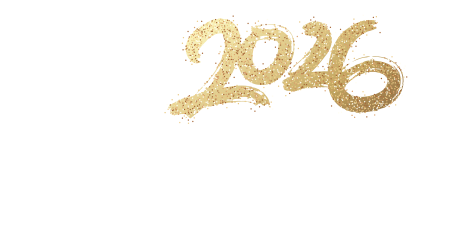Local Validation Requirements
| Code | Local Validation Requirement | When is this required? | What information is needed? | National/Local Policy |
|---|---|---|---|---|
|
LV1 |
Heritage Statement/ Archaeology Assessment
These may be combined into one Heritage Statement where both heritage and Archaeological designations apply |
Heritage Statement: Applies to all development proposals which will/may impact designated Heritage Assets and/or their settings (including conservation areas and locally listed buildings) Archaeology: Applications for major development. Applications for development known to be on or adjacent to a heritage asset of archaeological interest. Applications for development on sites of Archaeological potential. |
Heritage Statement It should include a schedule of works to the heritage asset(s); an analysis of the significance of the archaeology, history and character of the building/structure, the principles of and justification for the proposed works and their impact on the special character of the heritage asset, its setting and the setting of adjacent heritage assets may be required*.
Archaeology Assessment An appropriate desk-based assessment and, where appropriate, a suitable field evaluation to include the assessment of the character, condition and extent of any archaeological remains*. Where remains are identified and considered to be of specific importance, it should be demonstrated how the development has been designed to enable the preservation in situ, or if appropriate arrange for excavation, recording, analysis and reporting of the remains. As a minimum the Council recommends that the Historic Environmental Record is consulted. Full details of Kent Archaeology can be found online Areas of Archaeological potential are shown on the Local Plan Policies Map * The scope and degree of detail required will vary according to particular scale and circumstances of each application |
|
|
LV2 |
External Lighting Scheme |
All development proposals where external lighting is proposed. |
Full lighting scheme – Requirements as set out in policy ENV4 and Dark Skies SPD The Ashford Borough's Dark Sky Zone Area Designations can be viewed on Local Plan Policies Map Further information can be found via the Institute of Lighting Professionals |
|
|
LV3 |
Flood Risk Assessment |
All Major Developments All developments in Floodzone 1 when:
All new built developments within Flood Zones 2 and 3. |
Site Specific Flood Risk Assessment (FRA) - where one is required under the National Planning Policy Framework. View advice from national government. The Assessment will include supporting evidence including, but not necessarily limited to, plans, drawings and calculations. What to include in your Flood Risk Assessment For Flood Zones 2 & 3 applicant must address requirement for Flood Risk sequential test/exception test as set out in NPPF & PPG. |
|
|
LV4 |
Sustainable Drainage Strategy |
All development proposals (set out in SPD). |
This will include your overall approach and your rational in terms of preferable alternatives to surface water management having regard to sustainable drainage hierarchy as set out in the SPD. All Major developments should incorporate sustainable drainage systems unless there is clear evidence that this would not be appropriate. Where possible, SuDS features should provide multifunctional benefits and have maintenance arrangements in place to ensure an acceptable standard of operation is achieved throughput the lifetime of the development. |
|
|
LV5 |
Renewable Energy Statement |
Major applications and all applications for renewable energy production. |
Supporting statement addressing policy ENV10 criteria. In the case of all new renewable energy production facilities, information regarding how the local environment will be protected. |
|
|
LV6 |
Employment/Local Services Statement |
Proposals for loss of existing employment premises or loss of shops/services in a village or local centre & where seeking to justify proposals in relation to viability of current use. |
Supporting statement including evidence of marketing to justify loss of employment premises or local services, as set out in Policy EMP2 or EMP10. |
|
|
LV7 |
Fibre to the Premises Statement |
All residential and employment schemes in or adjoining Ashford urban area. For the rest of borough – applies to schemes of 10 or more dwellings or employments promoting 10 or more jobs. |
Fibre to the Premises Statement as set out in the Fibre to Premises SPD and Policy EMP6. |
|
|
LV8 |
Vehicle Parking, Cycle Storage Plan and Electrical Charging Points |
Proposals for new dwellings, alterations to existing dwellings and/or new or changes to employment premises. |
Information should include all existing and proposed commercial and/or residential vehicular parking spaces and cycle storage areas in new developments. Information should also be provided, where possible, of electric vehicle charging points. Loading areas and arrangements for manoeuvring, servicing and parking of vehicles should also be clearly identified. This should be included on a scaled plan. Further guidance for residential parking requirements can be found in Residential Parking SPD. |
|
|
LV9 |
Transport Statement/ Assessment and/or Travel Plan |
Major development proposals |
Transport Statements should be used where development has a limited transport impact. Transport Assessments should be used where more impact is likely and mitigation measures are probably needed. Travel plans are required when long term management strategies are required to deal with significant transport impacts. Where appropriate the Council will liaise with relevant transport authorities in order to establish which evidence is required. |
|
|
LV10 |
Stodmarsh Mitigation Strategy |
All applications for new housing and overnight accommodation within the Stour Catchment Area or that will discharge into identified Wastewater Treatment Works:
|
View Stour Catchment Area map. Submission of Mitigation Strategy / Appropriate Assessment must include:
|
|
|
LV11 |
Ecological Surveys |
Any development on or adjacent to designated nature conservation sites (including Local Wildlife Sites) or developments which will result in the disturbance of wildlife habitats including semi- natural open space and buildings with bat roost potential. |
All designations can be found on the Local Plan policies map. A free online tool for householders and small to medium- scale developers who want to undertake a development project to check whether they will need expert ecological advice before submitting a planning application. Ecological survey reports should include a description of the proposal; desk study and field survey (extended Phase 1 habitat survey and detailed species surveys as necessary relating to the site and adjacent area likely to be affected by the proposals). Evaluation of features and assessment of the likely impacts of the proposal; discussion of mitigation, compensation and enhancement measures should be included within the report (with reference to paragraph 170 of the NPPF where appropriate). The mitigation and enhancement strategy should be proportionate to the perceived impacts and should include clear, site-specific prescriptions, rather than general or indicative possibilities, and they should be feasible and deliverable. Considerations should also be given to the minimum 10% BNG requirements which might be captured within the ecological reports/plans as appropriate where on-site or combined provisions are envisaged. Surveys should be completed at an appropriate time of the year by suitably qualified and experienced ecological consultants and should comply with published guidance and best practice. Applicants should seek further advice from Natural England's standing advice and a map based search can carried out using Natural England's Magic Map. Get further details on Pre-submission screening service for European Protected Species. |
|
|
LV12 |
Affordable Housing Statement |
Major applications 10 or more dwellings. |
Demonstration Compliance with HOU1. Any variation of this should include an evidence based justification. The statement should include the number and mix of units and floor space of habitable areas of residential units. Scaled Plans showing the location, type, floor space of units and number of bedrooms should also be submitted. A proportion of wheelchair accessible homes will also be required complying with building regulations part M4 (3b). These shall be provided within the affordable rented element of the scheme, capped at a maximum of 7.5%. (See policy HOU14) Where Vacant Building Credit is being claimed, details of period of vacancy and the last known date of use of the building should be included within the application. *Please note that this can form part of the Design and Access Statement Commuted sums in lieu of onsite provision will only be accepted in exceptional, justified circumstances as set out in policy HOU1. *See Viability Assessment below if applicable. |
|
|
LV13 |
Self and Custom Build Plans/ Design Brief |
Residential development 40 or more units - Ashford and Tenterden 20 or more units - Villages and Rural areas |
Locations of proposed self-build plots to meet policy requirements must shown on a scaled plan. Where 5 or more self/custom build are proposed a design brief is also required, which should include a marketing plan. |
|
|
LV14 |
Residential Space Standards Compliance Checklist |
Dwelling mix - Major residential schemes of 10 or more dwellings External open space – All new dwellings Residential space standard – All new dwellings Accessibility Standards – Schemes of 5 or more new build dwellings |
A detailed list and block plan must be provided to show the amount and location of dwelling types and sizes in accordance with Policy HOU18. Scaled plans must be provided to show compliance with external open space standards in accordance with Policy HOU15. Details of floorspace and scaled floorplans must be provided for all new dwellings to show compliance with residential space standards in accordance with Policy HOU12. A proportion of wheelchair accessible homes will be required complying with building regulations part M4 (2). The location of these must be shown on a scaled plan. |
|
|
LV15 |
Air Quality Assessment |
All Major developments. |
Where proposals might lead to a significant deterioration in air quality or national air quality objectives will be exceeded and Air Quality Assessment must be provided as set out in policy ENV12. Get more information on the Kent and Medway Air Quality Partnership's Technical Planning Guide and National Planning Practice Guidance |
|
|
LV16 |
Minerals Assessment |
New development within MSAs or MCAs or within 250m of safeguarded Minerals and waste facilities (Not householder applications) |
Kent County Council recommends that all Kent district and borough councils include Minerals Assessments and Minerals and Waste Infrastructure Assessments in the local list of validation information requirements for planning applications within Mineral Safeguarding Areas and Mineral CAs and within 250m of safeguarded minerals and waste facilities. All relevant minerals designations can be found on the Local Plan Policies Map. |
|
|
LV17 |
Tree survey and/or associated Arboricultural Impact Assessment |
Where works are required to a protected tree (TPO or tree in Conservation Area), and where works are proposed to any trees as part of the proposals. |
A Tree Survey should include Give a detailed description of the proposed works, e.g. crown thinning, reduction/topping, lifting, felling or the removal of dead or dying trees, and the reasons for it. Digital photographs of the existing tree(s) should be provided. A structural engineer's or surveyor's report if the work required relates to subsidence damage and arboriculturist's report if the work required relates to the condition of the tree. The Arboricultural Impact Assessment (AIA) considers how a proposed development and the associated/ adjacent trees will co-exist and interact in the present and the future. It should demonstrate how factors such as root protection, changes in levels, installation of services, material storage etc. have been given consideration through the design process and that there will be no significant adverse impacts for important trees. It should also demonstrate consideration for future issues e.g. the long term effect of changing surfacing or levels or the future pressure to prune or remove trees due to shadowing or encroachment. Tree root protection zones should be clearly marked on a scale plan. |
|
|
LV18 |
Structural Survey |
Required for: The demolition, or partial demolition of a Listed building(s), or the conversion of a Listed Building, or the conversion of agricultural buildings. |
This should demonstrate that they are capable of conversion without major alterations or rebuilding of the property, for example for barn conversion applications. |
|
|
LV19 |
Refuse Storage Facilities |
New dwellings including apartments schemes |
Details of the proposed facilities for refuse bin storage and collection in new residential dwellings – see informal design guidance. Refuse vehicle tracking shall also be provided. Details should be included within the block plan. |
|
|
LV20 |
Viability Assessment |
Where schemes are not proposing to meet all policy requirements, such as affordable housing (HOU1), as meeting such requirements would render the proposal not economically viable. |
A Viability Assessment (VA) which contains sufficient evidence to enable the Council to properly assess a scheme in accordance with the recommended practice set out in the Royal Institution of Chartered Surveyors (RICS) and the National Planning Policy Framework. *notes:
|
|
|
LV21 |
Specialist Housing Evidence |
Standalone proposals for older persons housing (including C2) / Local Needs Housing. |
Statement of evidence of need for other types of specialist housing such as older persons housing or Local Needs Housing. This should include reference to any up to date Local Needs Surveys. |
|
|
LV22 |
Planning Statement including Statement of Community Involvement |
All major applications (including change of use). |
The statement should identify the context and need for a proposed development and should include an assessment of how the proposed development accords with relevant national and local planning policies, and how consultation has taken place with the local community prior to application submission. *The planning statement can incorporate details of other validation requirements such as specialist housing or marketing evidence. |
|
|
LV23 |
Landscape Character Assessment |
All development proposals within the AONB. All major development proposals elsewhere. |
Landscape character assessment (LCA) is the process of identifying and describing variation in character of the landscape. LCA documents identify and explain the unique combination of elements and features that make landscapes distinctive by mapping and describing character types and areas. They also show how the landscape is perceived, experienced and valued by people. More information can be found in the Ashford Landscape Character SPD All landscape designations can be found on the Local Plan Policies Map. More guidance can be found on the Planning Practice Guidance. |
ENV3a/3b – Landscape Character and Design AONBs
|
|
LV24 |
Sustainability Assessment |
Major non-residential development. |
Must include evidence of BREEAM standard as set out in Policy ENV11. |
ENV11 – Sustainable Design and Construction - non-residential |
|
LV25 |
Town Centre/Retail/Leisure Uses Impact Assessment |
Any retail located outside of Ashford and Tenterden Primary Shopping frontages and proposal is 500+ sq.m or other main town centre uses in accordance with NPPF. |
This assessment should include:
|
|
|
LV26 |
Noise and Vibration Impact Assessment |
Instances where the development would generate significant levels of noise or vibration in relation to residential and commercial properties, or it proposes a noise- sensitive use in proximity to a known noise source |
An assessment of the source and the impact together with any necessary mitigation measures to reduce disturbance due to noise or vibration to acceptable levels. The noise assessment should be prepared by a suitably qualified acoustician and demonstrate that there is sufficient sound insulation (or other mitigation) to avoid any harm to the adjacent residents |
|
|
LV27 |
Environmental Statement (EIA Development) |
All EIA development Developments falling within a description in Schedule 1 of the Environmental Impact Assessment (England and Wales) Regulations 2017 require EIA. Development of a type listed in Schedule 2 to the 2017 EIA Regulations may require EIA. |
Environmental Statement to be submitted. All applications over 0.5ha in size will be screened by the Local Planning Authority to determine whether an Environmental Statement is required. This screening can be requested prior to an application being submitted. |
National Planning Policy Framework Environmental Impact Assessment (England and Wales) Regulations 2017 |
|
LV28 |
Fire Statement |
All applications for planning permission for development which involves the provision of one or more relevant buildings, or development of an existing relevant building or development within the curtilage of a relevant building. A relevant building is one which contains two or more dwellings or educational accommodation and meets the height condition: 18 metres or more in height, or seven or more storeys. |
A fire statement to be submitted unless an exemption applies. The fire statement must be submitted on a form published by the Secretary of State for planning permissions made on or after 1 August 2021. It should set out the fire safety design principles, concepts and standards that have been applied to the development. |
Guidance: Fire Safety and High Rise Residential Buildings (August 2021) |
|
LV29 |
Climate Mitigation Statement – Solar |
New residential dwellings. Dwellings resulting from a material change of use. NB - Applicants proposing to carry out householder development involving the erection of an extension, outbuilding, a car port and/or a garage are encouraged to apply this guidance. |
Climate Mitigation Statement to include- The scale of the proposed installation for example the amount of panels proposed to be provided per dwelling and confirmation of the amount of energy the installation will generate. If the amount of energy generated is less than 50% of the dwellings yearly average energy consumption, evidence to demonstrate why the development cannot reach the target encouraged. Confirmation of the technology being used, and if it is not the most efficient and up to date technology the reasons why not. Details of the appearance of the solar PV panels. Elevations (for both roof and ground mounted arrays). For systems fixed or integrated into roof coverings, a roof plan identifying the location of the proposed system. For free standing ground-mounted systems, a block plan. Details of future maintenance. |
Guidance for developers, applicants and decision makers on climate change. ENV10 Renewable and Low Carbon Energy |
|
Climate Mitigation Statement – EV Charging Points (EVCP) |
New residential dwellings. Dwellings resulting from a material change of use. NB - Applicants proposing to carry out householder development involving the creation of new parking provision in the form of new hardstanding, a car port and/or a new garage are encouraged to apply this guidance |
Climate Mitigation Statement to include-
Details of the scale and appearance of any infrastructure above ground for example plugs, sockets and/or charging unit - the council will expect all charging points to be fitted with a Type 2 plug as a minimum. A layout plan and/or map identifying the following:
Where applicable, details of future management. |
||
|
Climate Mitigation Statement – Water Butts |
New residential dwellings. Dwellings resulting from a material change of use Householder development where the development includes the following:
|
Climate Mitigation Statement to include- Details of the type, size, capacity and number of water butts to be provided. A layout plan and/or map identifying the following:
Outline Planning Applications: It is accepted that given the nature of an outline application, the Statement might contain less detail. The minimum any Statement must set out is confirmation that: For Solar - solar PV will be provided and a commitment that when reserved matters are submitted they will be accompanied with the requisite level of detail specified above. For EVCP - an indication on a layout map where and how many EV charging points shall be provided, and a commitment that when reserved matters are submitted they will be accompanied with the requisite level of detail specified above. For Water Butts - confirmation of the type of rainwater harvesting system to be provided and a commitment that when reserved matters are submitted they will be accompanied with the requisite level of detail specified above. |
||
|
LV30 |
Biodiversity Net Gain (BNG) Statement and supporting plan |
All applications for planning permission that will be subject to the ‘Biodiversity Gain Condition’ as defined in Paragraph 13, Schedule 7A of the 1990 Act. |
In addition to the national validation requirements for BNG as set out in NV10 (above), we require applicants to submit the following additional information in support of their application to demonstrate how the Biodiversity Gain Objective is intended to be achieved.
Further information may be required during the course of consideration of the application. |






